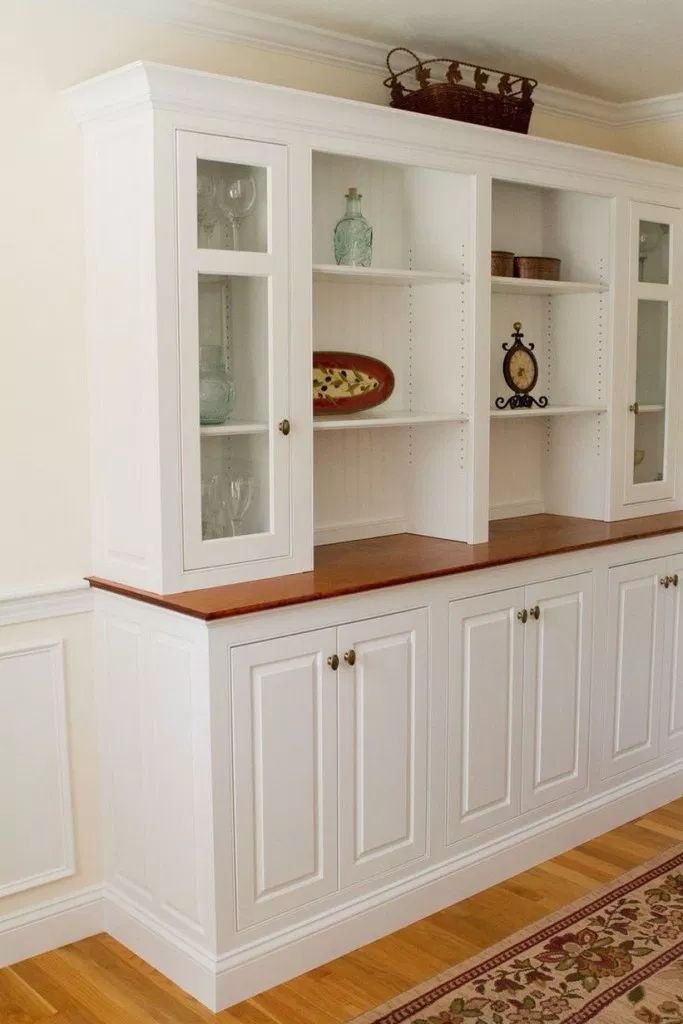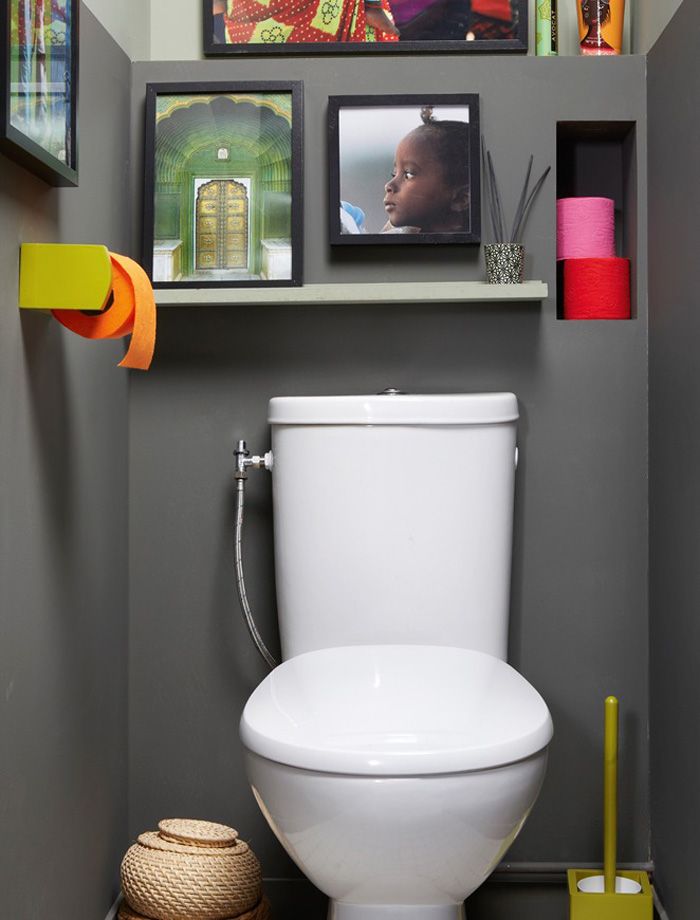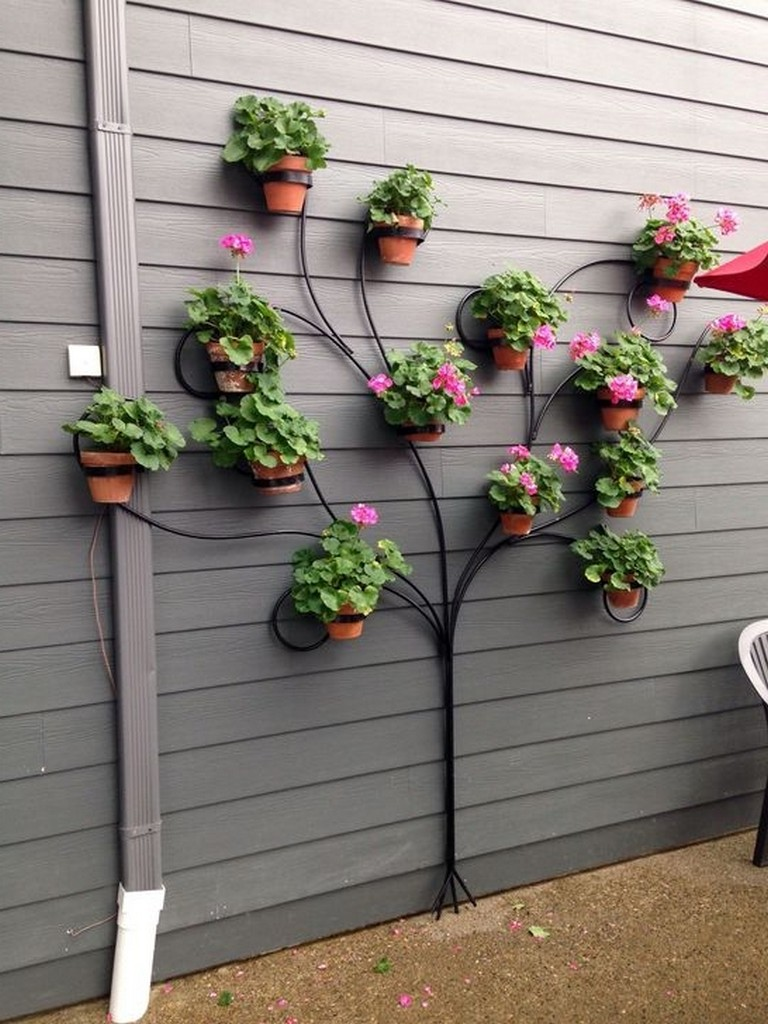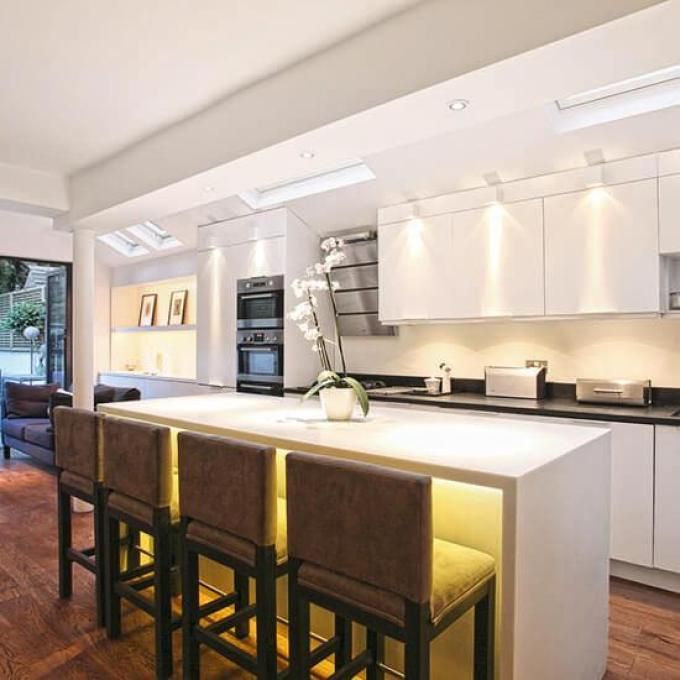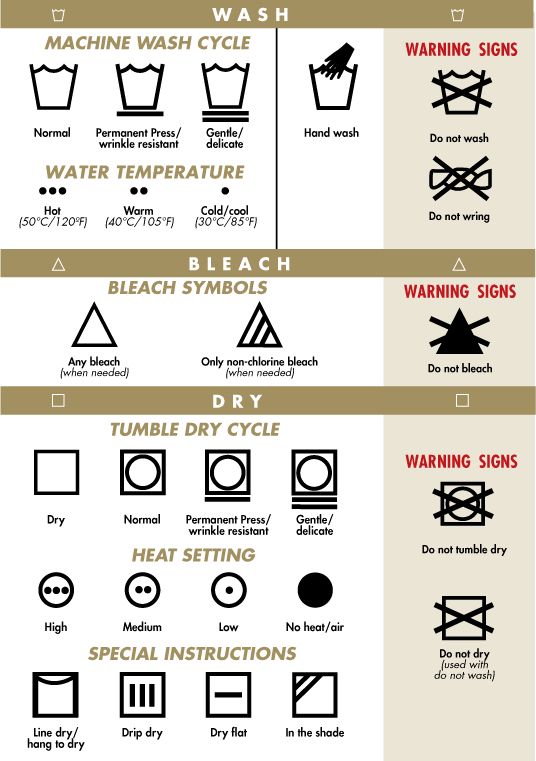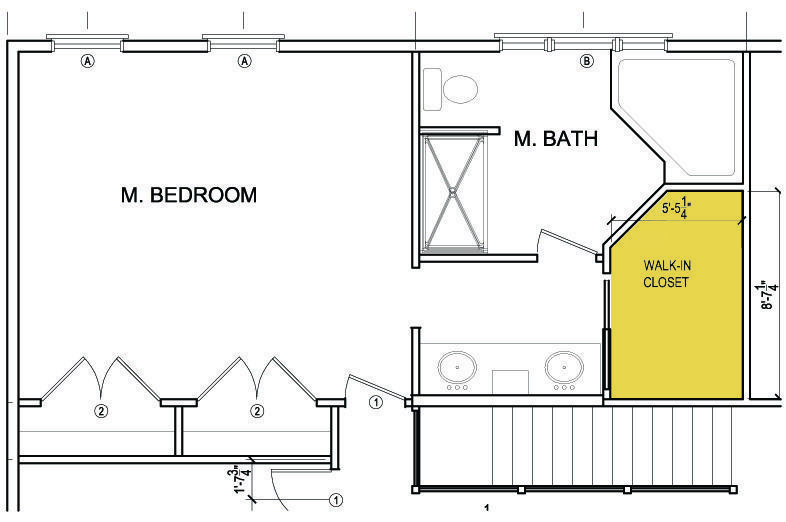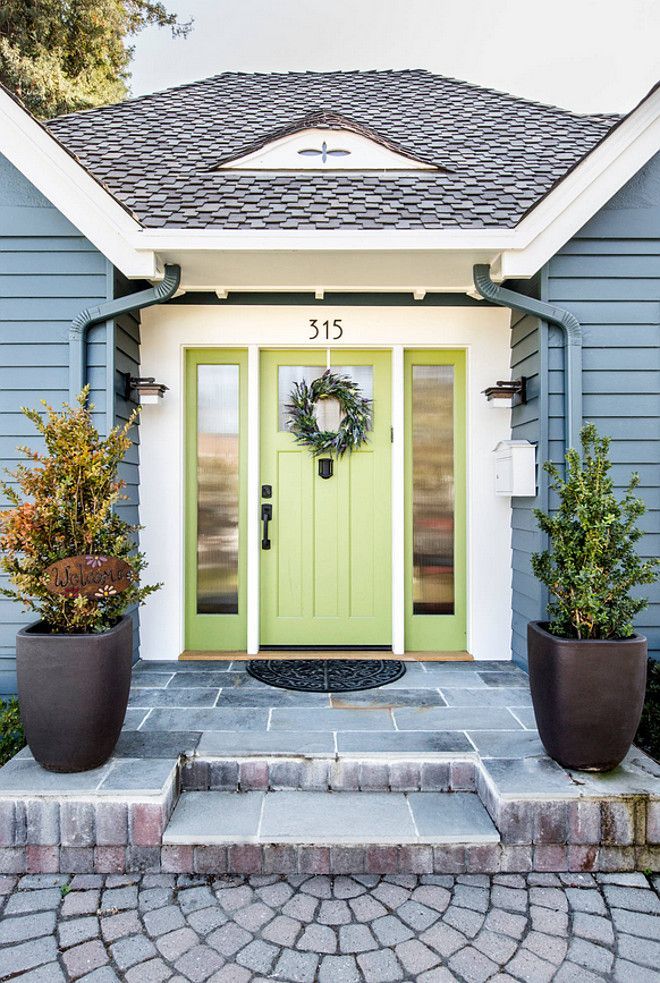Dining room wall storage ideas
11 ways to keep yours clutter-free |
(Image credit: Katie Charlotte)
Great dining room storage ideas really are worth their weight in gold. For dining spaces used by all the family for everything from eating to home-working, they are useful for hiding away every day clutter; for smaller homes, they might take some pressure of the kitchen, and in open-plan spaces they might be used to hide all manner of items not remotely related to dining.
Bespoke dining room storage options are always best for making your space look not just neat but beautiful for those occasions when you open your home to friends and family.
Dining room storage ideas
If you are looking for dining room ideas, focus on the dining room storage at the same time as the chairs and tables – you may want items that complement each other, or which can be built around each other.
1. Find a discreet dining room storage solution
(Image credit: De Rosee Sa/Tom St Aubyn)
For anyone looking for dining room ideas for apartments or those who prefer a clean and uncluttered look as opposed to open shelves and busy surfaces, the only solution is to invest in built-in cupboards, like these slim units.
Space planning has to start at the beginning of a project in order to maximize the opportunities available. When building in cupboards and wardrobes, be sure to mark out on the floor how much space will be needed to access these in order to avoid routes being blocked.
The bespoke joinery shown in this London mansion block was made by Ed Keyser and consisted of oak veneered ply interiors, hand-painted cupboard fronts in Farrow & Ball ’s Strong White and Buster and Punch hardware.
‘Clever detailing of the panelling helped to disguise these tall cupboards framing the dining area, built to house glassware and a drinks' cabinet,’ explains architect Clare Stevenson of De Rosee Sa . ‘A warm oak floor and black metal surround to the shelving niches offsets the neutral color palette.’
2. Invest in bespoke joinery
(Image credit: Barlow & Barlow/Jonathan Bond)
Commissioning a bespoke piece of joinery is no small investment so if taking the plunge with dining room storage, it’s worth making the most of the design.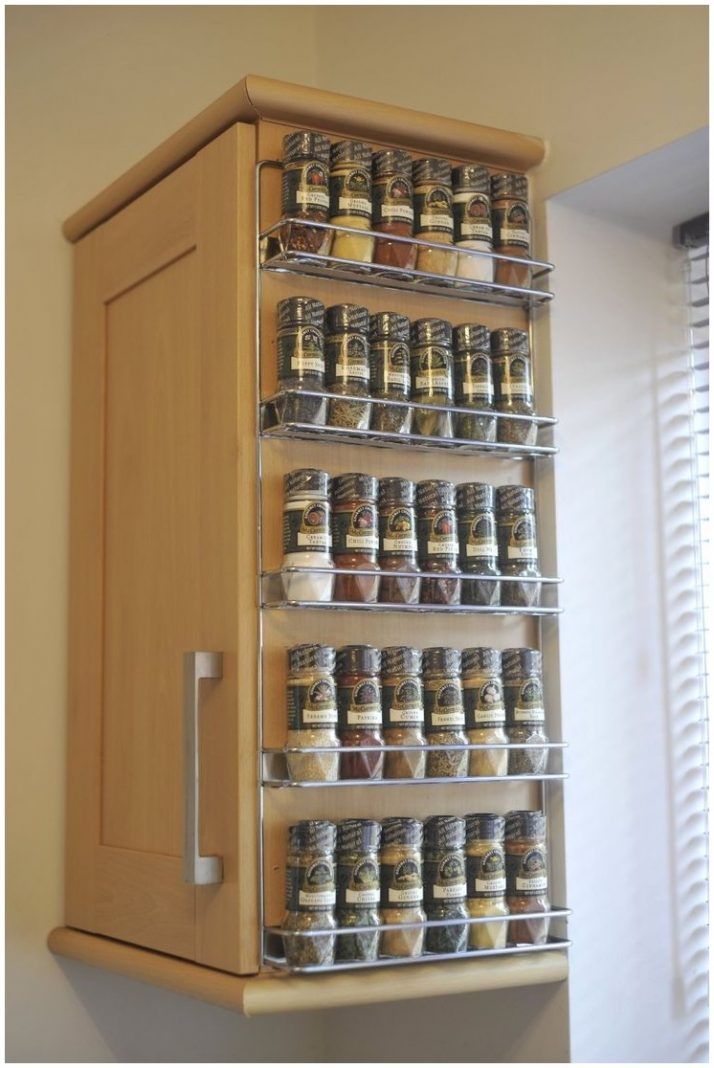 This piece of floor-to-ceiling furniture is the perfect storage solution for small dining rooms. Created for a breakfast room in a London property, it features a banquette seat and plenty of storage as one whole proposition.
This piece of floor-to-ceiling furniture is the perfect storage solution for small dining rooms. Created for a breakfast room in a London property, it features a banquette seat and plenty of storage as one whole proposition.
With no square inch wasted, it’s an excellent use of the space available, making the furniture work as hard as it possibly can. The joinery was designed by Teco Bespoke for interior design firm Barlow & Barlow . It’s been made with extra tall glass doors giving it a more contemporary and refined look.
‘I’m a big fan of a banquette seat, especially if you can add storage and artwork to really make it pop,’ says Lucy Barlow.
The key to the success of this piece is the colorful and eye-catching artwork by contemporary Aboriginal artist Bob Gibson, sourced through specialist dealer Jennifer Guerrini-Maraldi. Framed in a handsome shade of dark green, the bold colors and expressive form create a striking contrast.
3. Utilize under stair space for open-plan spaces
(Image credit: Anna Stathaki)
If workspace in the kitchen is already limited consider taking inspiration from this dining room storage nook by interior designer Rebecca Hughes .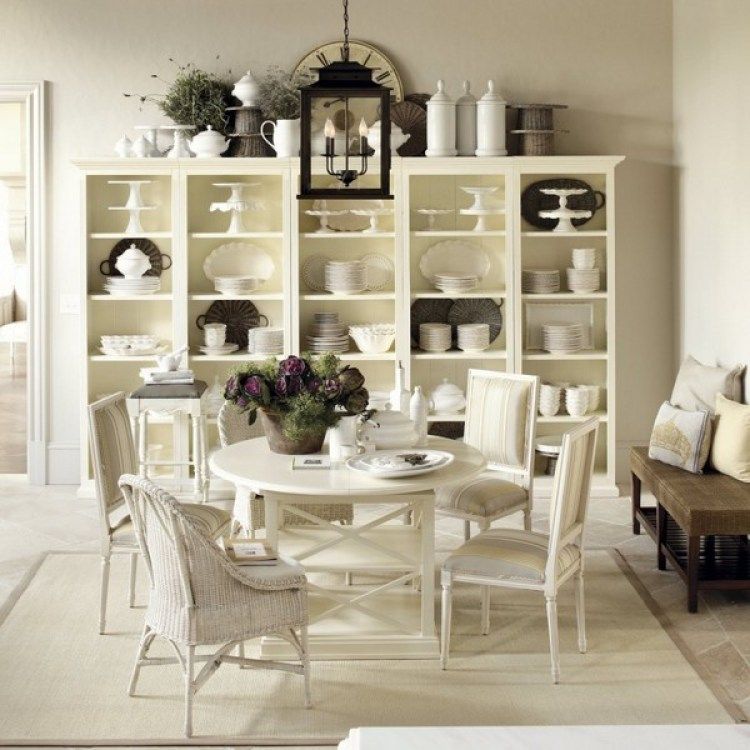 Perfect for anyone looking for under stairs ideas that will relieve pressure on a kitchen diner's storage but won't be a solid floor-to-ceiling piece of furniture, it's basically a bespoke sideboard.
Perfect for anyone looking for under stairs ideas that will relieve pressure on a kitchen diner's storage but won't be a solid floor-to-ceiling piece of furniture, it's basically a bespoke sideboard.
‘We were incredibly tight for space in this open plan kitchen and needed to find additional storage. My client and I came up with creating this nook with practical drawers and cupboards. To make a feature of this unusual space, we added a little rattan wall light from Porta Romana,’ says interior designer Anna Stathaki .
4. Use vertical space in small dining rooms
(Image credit: Studio Peake/Alexander James)
Whether you're combining kitchen diner ideas with dining room storage ideas or just want to max out a wall in a dining room with floor-to-ceiling cabinetry to store everything from paperwork to crockery, think big.
However, when designing tall cabinetry – built-in or otherwise – that will take up a whole wall, try to ensure that they don’t end up dominating the space.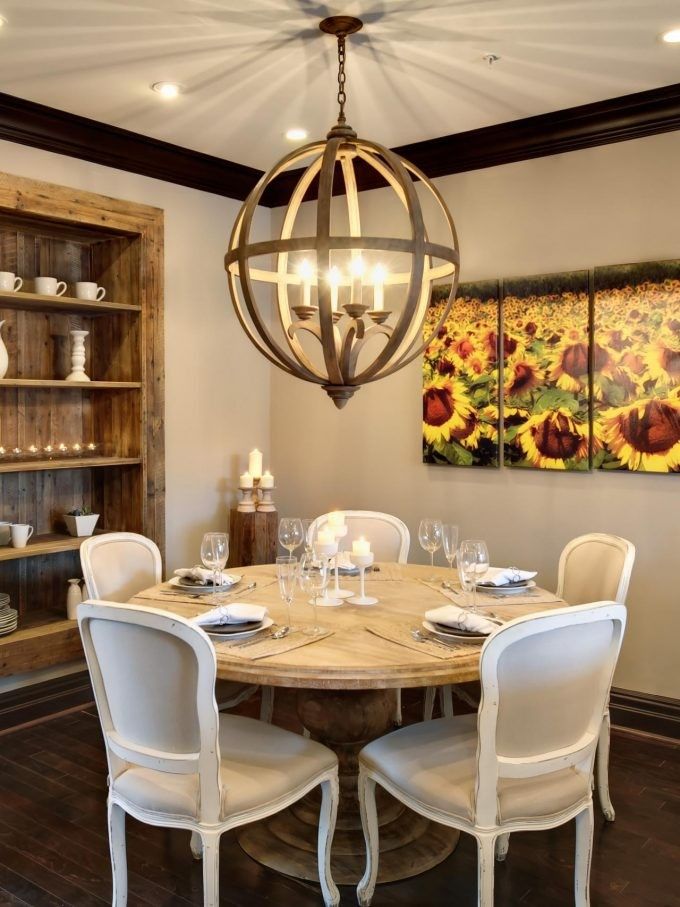 A simple design, such as this one by Studio Peake which has no frame and classic v-grooved panels will help.
A simple design, such as this one by Studio Peake which has no frame and classic v-grooved panels will help.
‘I also used the same paint color as the walls to help it blend in with the rest of the room,’ explains Sarah Peake. ‘Lovely antique brass handles from Chloe Alberry added a bit of interest.’
5. Combine home office and dining room storage ideas
(Image credit: K&H Design/Paul Raeside)
If you’re working in a multi-purpose space, like a dining room, then it’s best to look for furniture options which work well when you’re using the area for leisure or entertaining. Opting for a dining table rather than a desk, for example, makes the transition between work and free time much easier.
Similarly, the storage can be multi-purpose if designed well. Here, open shelves make for one of those dining room wall ideas that is part practical storage/part display. The key, of course, is to keep the files and books as neat as the display elements of the scheme.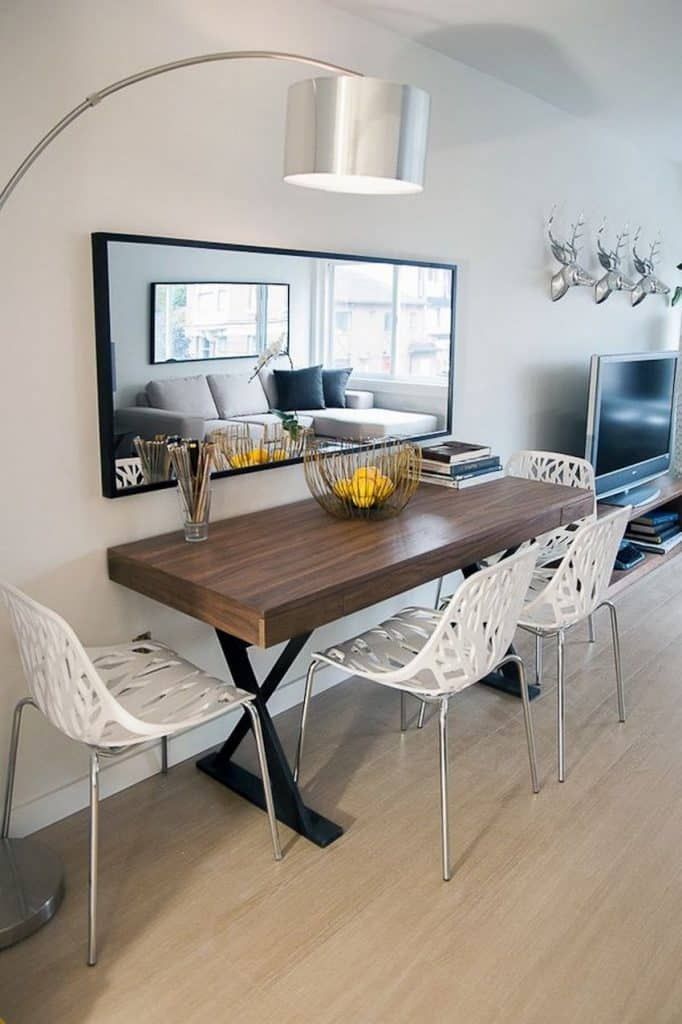 If that's not realistic, putting doors over the lower shelves will ensure you can still have the best of both worlds.
If that's not realistic, putting doors over the lower shelves will ensure you can still have the best of both worlds.
6. Draw attention to dining room storage displays
(Image credit: Simon Brown)
Dining room storage ideas needn't just be practical – they can be all about display. Here, a wallpaper border defines and adds character to an alcove – and this is a great way to add layering to dining room color schemes.
Back in the 18th century, wallpaper borders were as important as the wallpaper itself as a decorative element, but keeping the line simple is the design rule of thumb now. Borders come in all shapes and sizes, but we recommend keeping the design architectural. Here a charming scallop trim sits happily with a contrasting green, or for a more formal setting, choose a Greek key border.
7. Hide dining room clutter in a low-slung sideboard
(Image credit: Katie Charlotte)
A classic buy in the seventies, sideboards are one of those dining room storage ideas that have never really gone away.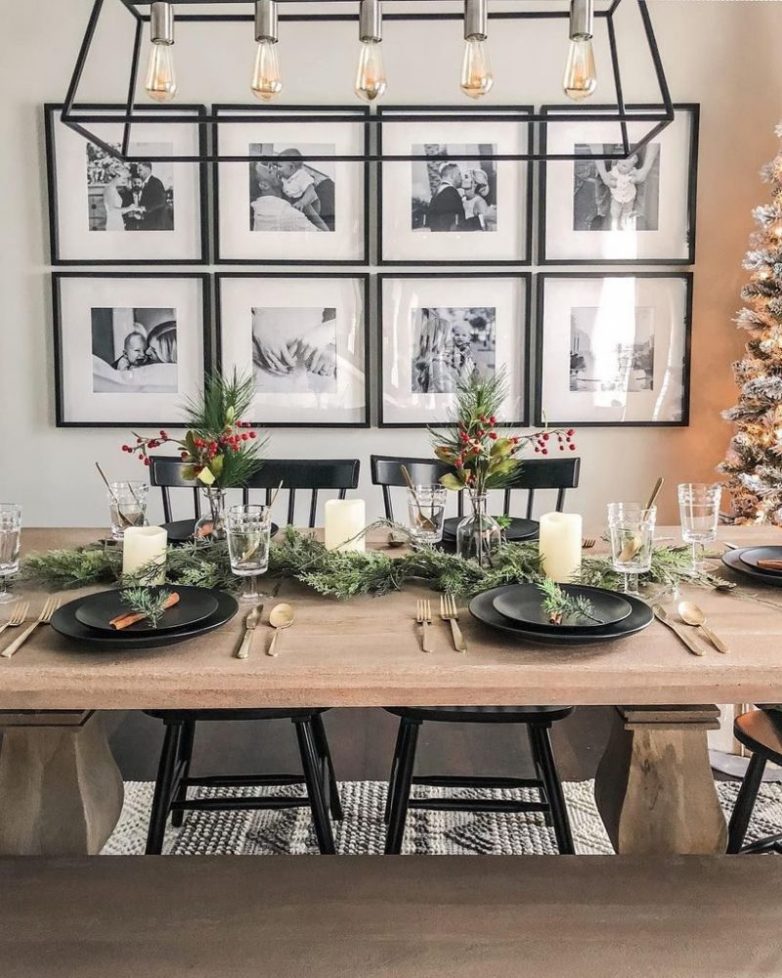 Traditionally created to house formal china, cutlery and glassware, they can also be repurposed to hide away family games and home office paperwork.
Traditionally created to house formal china, cutlery and glassware, they can also be repurposed to hide away family games and home office paperwork.
Another bonus of this low-slung piece of furniture? They allow for sideboard decor ideas on an above the surface, including art and lighting – important elements for creating a focus (other than the dining table) and cozy pools of light.
8. Mix open and closed storage
(Image credit: Todhunter Earle/Paul Massey)
A clever trick to avoid overcrowding a narrow space is to use a mix of closed and open dining room storage space – too many cabinets can make an open-plan room look too functional, especially in a more traditional setting. This scheme by Todhunter Earle employs a balance of the two approaches.
‘Our client had collected a lot of ceramics that lent themselves nicely to being stacked and displayed on shelves,’ says Kate Earle. 'If you don't have (or don't want) an abundance of fitted cabinets, shelves are the perfect way to maximize storage and keep your cherished possessions on display.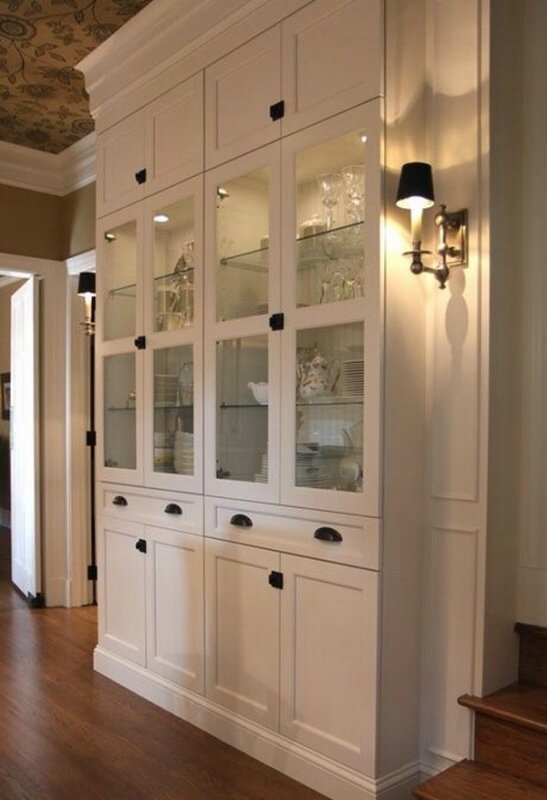 '
'
9. Display and store in a glazed dining room dresser
(Image credit: Neptune)
Glass-fronted or open shelved dressers are a staple of dining room storage ideas. Like built-in units, the upper half of the furniture is best devoted to display, the lower part to solid-fronts that can hide more unsightly dining space must-haves.
Learning how to style a display cabinet properly will ensure a focal feature that's almost a work of art in itself.
10. Build in a banquette with hidden dining room storage
(Image credit: Simon Brown )
Banquette seating ideas are ideal for compact dining areas, breakfast rooms and kitchen diners – especially if they have storage built into them. In this type of design, lift-up lids on seating, hidden beneath cushions, makes for roomy storage that can cope with everything from little-used appliances to tableware you use only very occasionally.
Banquettes can be built into nooks created by other dining room storage ideas, too. Here, a cozy corner is created with floor-to-ceiling cabinetry on one side.
Here, a cozy corner is created with floor-to-ceiling cabinetry on one side.
11. Make space for wine in your dining room storage
(Image credit: Roundhouse)
Wine fridges are one of those modern dining room ideas that can look beautiful if styled well, as in this space. Perfect in an alcove – whether a natural alcove or one created by other built-in furniture – wine fridges can be lit from within to create a soft glow that complements your scheme when lighting a dining room.
What are the best dining room storage ideas for small spaces?
The best dining room storage ideas for small spaces tend to be versatile, hidden or built in so that every spare inch of space is neatly used. This can include dining room table drawer storage that can hold cutlery and placemats, candles and napkins; banquette seating with lift-up lids for everything you might need to use in a dining room; and floor-to-ceiling cupboards that can be slim or shallow but space-efficient and able to hold plenty of items.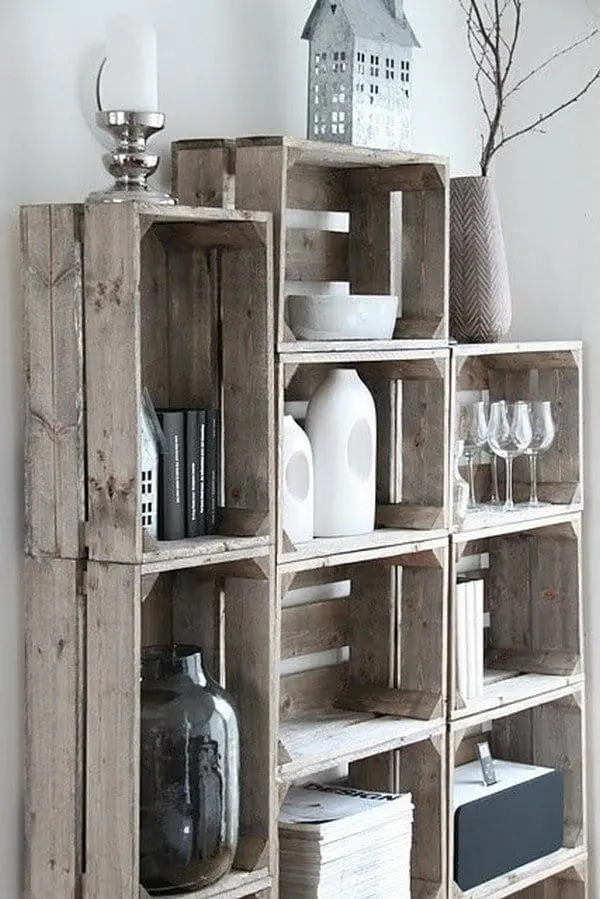
What are good dining room table storage ideas?
Good dining room table storage ideas include long, narrow drawers at either end of the table that don't impact on diners' comfort, but which do provide plenty of useful storage space for items that need to be on hand for dining – such as placemats, coasters and cutlery. It is also worth having a cute caddy on a dining table to hold cutlery, candles or condiments; these can be chosen in a material that complements your room's other accessories, in basketwork or steel, for example.
Lucy Searle has written about interiors, property and gardens since 1990, working her way around the interiors departments of women's magazines before switching to interiors-only titles in the mid-nineties. She was Associate Editor on Ideal Home, and Launch Editor of 4Homes magazine, before moving into digital in 2007, launching Channel 4's flagship website, Channel4.com/4homes. In 2018, Lucy took on the role of Global Editor in Chief for Realhomes. com, taking the site from a small magazine add-on to a global success. She was asked to repeat that success at Homes & Gardens, where she has also taken on the editorship of the magazine.
com, taking the site from a small magazine add-on to a global success. She was asked to repeat that success at Homes & Gardens, where she has also taken on the editorship of the magazine.
Dining room storage ideas – 28 solutions for a clutter free space
(Image credit: Future PLC)
Not everyone has a stand-alone dining room, the dining area may be part of an open-plan space, part of the kitchen, or it may have to double up as a home office. Practical dining room storage ideas are essential if you want to entertain or to make room to enjoy a special family meal.
Sideboards have been around for years, and with good reason, they provide plenty of storage space with a useful surface for display and decoration, but shelving, dressers and cabinets also come into their own in dining room ideas.
The object of the exercise is to create a tidy space with good storage, so even if it is used as a home office it can be transformed into a dining room with minimal effort.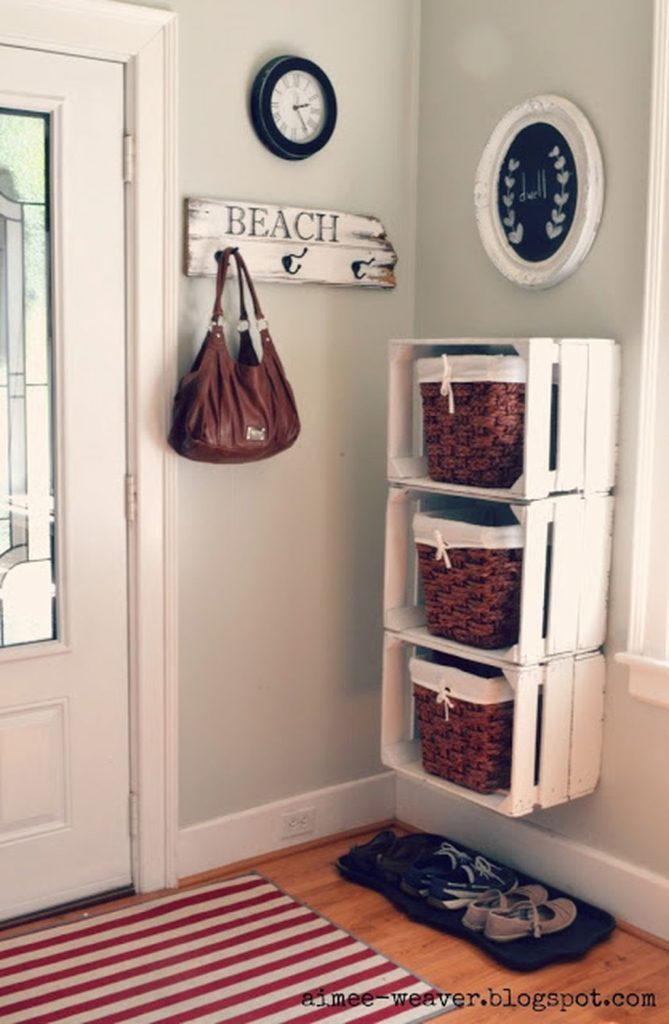 Built-in storage is a great idea as it is designed to fit the space, but there are plenty of multi-functional pieces that work well in a dining room and will give you the ideal dining room you have been looking for.
Built-in storage is a great idea as it is designed to fit the space, but there are plenty of multi-functional pieces that work well in a dining room and will give you the ideal dining room you have been looking for.
Dining room storage ideas
Effective storage will make your dining room a place of tranquillity and calm if organised correctly. So think about the space you have available and the best way to use it.
Is there a fireplace with alcoves on either side? Is there space around the dining table for shelving or a dresser? Also bear in mind how much space there is when the dining chairs are pulled out, you don’t want to bang into a piece of furniture each time you sit down.
1. Embrace the benefits of a built-in
(Image credit: Sharps)
Custom-built furniture will always be the most favourable, as it has been designed specifically for you to fit the space available. Using the alcoves either side of a chimney breast is a classic solution for a dining room storage idea.
Dresser-style units are tall or sometimes full-height to offer maximum storage. Generally, they are designed with cupboards below to hide all the mundane stuff such as china, napkins or placemats with glazed cabinets above for displaying glassware or favourite pieces, leaving the rest of the room free for the table and chairs.
2. Think about a dresser
(Image credit: Future PLC)
You may be lucky enough to inherit a dresser, or you may have to buy one, but they are the ideal dining room storage solution. Historically, you would always find a dresser in a farmhouse kitchen as they can store lots of tableware and cookware and look pretty too. They can be painted to suit your colour scheme and re-painted many times, you can also customise the inside with a different colour, wallpaper or shelf edging for a country look.
‘Pantries and dressers are a big trend, not just for the kitchen but the dining room too.’ Says Melissa Klink, Creative Director of Harvey Jones . ‘Storage that is tucked away around the corner is becoming increasingly popular. Plus, that wow moment when you open what looks like a cupboard door to expose a whole secret room behind just never gets old. A crowd pleaser for sure!
‘Storage that is tucked away around the corner is becoming increasingly popular. Plus, that wow moment when you open what looks like a cupboard door to expose a whole secret room behind just never gets old. A crowd pleaser for sure!
3. Make the most of a classic sideboard
(Image credit: Future PLC)
Sideboards are synonymous with dining rooms and have been used for centuries in one form or another in dining rooms. They come in lots of different sizes and styles and can hold lots of china, glassware and cutlery to general family ephemera. They tend to be quite low so the top can be dressed with lamps, picture frames, vases and accessories to make them part of the overall decorating scheme.
‘I love the idea of a sideboard,’ says Sam Baldry, Head of Design at Swoon . ‘By utilising its upper surface to display a chic arrangement of candlesticks, nostalgic family photos, and fresh flora and fauna; and the interior to store your dining utensils, napkins, and table accessories, you can create a truly versatile, space-efficient piece of furniture.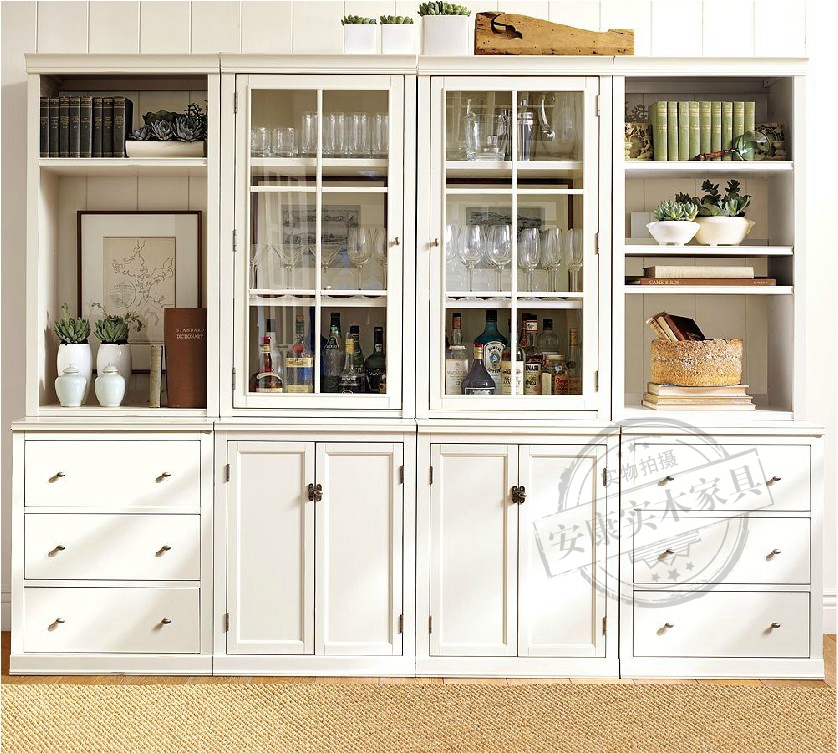
'Plus, with many charming designs available, including ones with bottle racks to store your dinner party tipples, you’re sure to discover an aesthetic that mirrors your current interior.’
4. Shelving solutions and consoles you can move around
(Image credit: Future PLC)
Another dining room storage idea for either side of a fireplace or central wall, is shelving. Shelving can be purpose-built to fit the space or freestanding, which is an ideal solution if you are renting, as it can be moved around or taken with you.
A narrow shelving unit like this one is good for a small space and is also perfect for displaying favourite accessories. You can also invest in a console table, which is a versatile piece of furniture, and can be used in a dining room, living room, bedroom or hallway.
5. Repurpose a vintage find for a unique look
(Image credit: King Living)
Vintage office or school cabinets are a lovely dining room storage option, and sustainable too.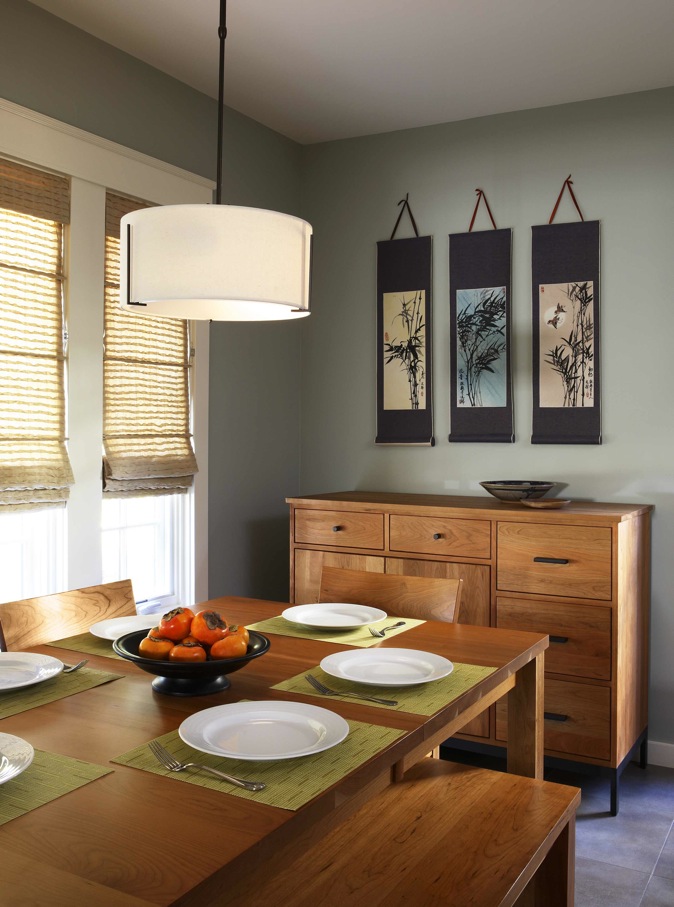 Buying second-hand furniture is a good way to reuse something that may have gone into a landfill and adds personality to a room.
Buying second-hand furniture is a good way to reuse something that may have gone into a landfill and adds personality to a room.
This set of drawers with its distinctive handles and card holders is a case in point. The wood can be sanded down and varnished or painted to give it a new lease of life and set the tone for an industrial theme to your dining room. Then to build on the look, team it with a metal frame table and bench and leather dining chairs. Add lanterns on the tabletop to continue the theme.
6. Consider a sliding-door cabinet in a narrow space
(Image credit: Cuckooland)
Just as pocket doors are the ideal solution in a small space, sliding doors on furniture work in the same way –the doors don’t open outwards to bash into furniture or people so they are ideal in a narrow room. They generally have shelving and drawers inside to store all the necessary tableware, with a sliding door that allows you to access either side, that doubles up as a display shelf too, as it has here.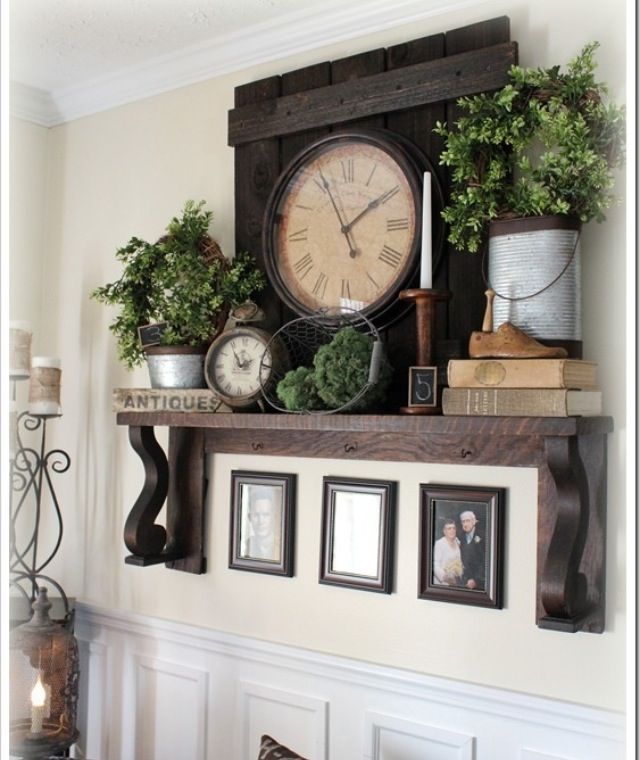
7. Choose bench seats with storage beneath
(Image credit: Future PLC)
If your dining area is tucked into a small space, consider building bench seating with storage beneath. It could either be a set of cupboards opened from the front as it is here or accessed from the top by lifting up the seat.
You can buy or make banquette seating yourself, or customise a bench with a cushion made from a length of foam covered in a favourite fabric. As well as being practical for storage benches are also winners for squeezing in extra table spaces without floating chairs.
‘For informal get-togethers and to fill remaining spaces within the kitchen and social zones, a dining table with benches allows for a more casual, jovial atmosphere and means one or two more can be squeezed in if need be!’ says Nick Atkin of Atkin and Thyme. ‘ If reconfiguring the room for a bigger party, benches are multi-use and can easily be placed around to offer laid-back seating for many. '
'
8. Use dead space to create custom-built storage
(Image credit: John Lewis & Partners)
Make use of an old chimney breast and build-in shelving as a great dining room storage idea. An unused chimney breast can become useful storage by removing the fire and expanding the space internally, without affecting the structure. This one has been lined with wood on either side with wooden shelves spanning the aperture, which is then used to display favourite objects, glassware, books and plants to add an interesting feature to the room.
9. Position a high level shelf for display
(Image credit: Habitat)
Floating shelving is great for displaying favourite objects and as it’s high on the wall, it’s tucked out of the way. There are no brackets so it has a contemporary look.
It also means that you could add to it with others beneath it, or put a console table beneath. It is a smart way to add subtle colour to wall alcoves in a white dining room.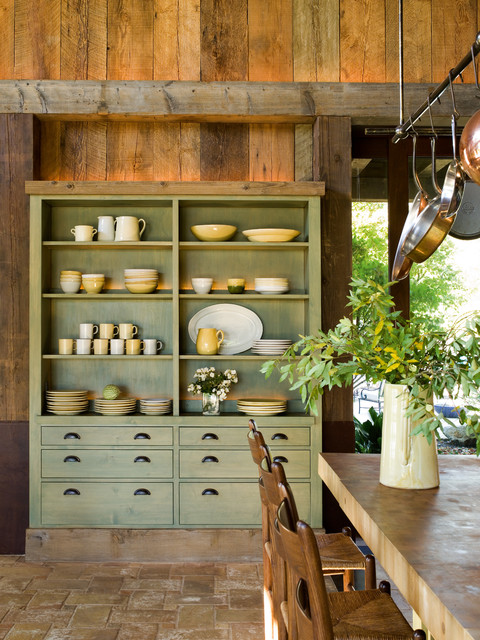 Pictures and your best crockery look great on floating shelves and are easy to change up.
Pictures and your best crockery look great on floating shelves and are easy to change up.
10. Squeeze in a china cabinet
Get the look: Arundel oak dining bench, from £465, Neptune
(Image credit: Future PLC/Simon Whitmore)
Make use of empty alcoves in a dining room by slotting in a slimline storage cabinet. Alcoves often vary in width, so it can be tricky finding furniture that’s an exact fit, but a single width cabinet should fit most alcoves, with a little breathing space on either side. This is also a great solution for a small dining room.
Choose a design with adjustable shelving inside so you can arrange the heights to suit what you’ll be storing, such as dinnerware and glasses or taller jugs and vases.
11. Build dining storage to fit your space
Get the look: Ivar double cabinets, £65 each, IKEA
(Image credit: Future PLC/David Brittain)
Create a tailor-made piece at an off-the-peg price using flatpack modular furniture.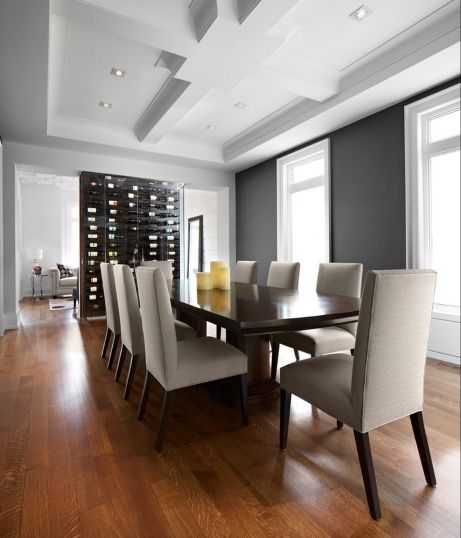 Buy simple wooden units and push them together in multiples to create one long bank of units to fit the available space.
Buy simple wooden units and push them together in multiples to create one long bank of units to fit the available space.
Add worktops, paint door fronts, or customise with different legs and handles to create a bespoke look, as they have done in this grey dining room by adding a bright yellow chair.
12. Create a storage wall
Get the look: Kita easy-fit pendant shade, £55, Next
(Image credit: Next)
Max out on dining room storage ideas by fixing up a whole wall of shelving. Build a simple wooden framework to cover one wall, adding horizontals and verticals to create different-sized boxes and cubbyholes.
Paint the background white or try a combination of colours in different sections for an imaginative dining room paint idea. Then put favourite tableware, beautiful dining room lighting ideas and decorative pieces on display.
13. Showcase everyday essentials
Get the look: Glass display cabinet, £1195, The White Company
(Image credit: The White Company)
While there’s a lot to be said for hiding clutter away behind closed doors, having favourite things on show in an open kitchen pantry idea gives heart to a home.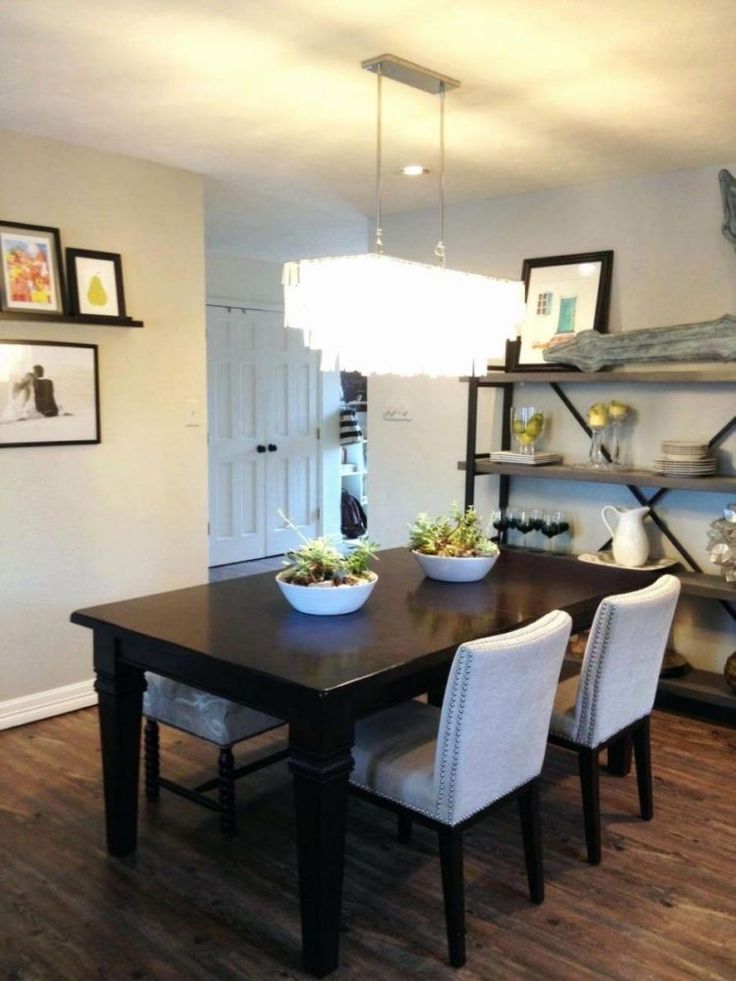
Tableware looks great displayed en masse – whether it’s simple all-white china, decorative glassware or earthenware serving dishes and platters – and a simple glass-fronted cabinet makes a great showcase. Glass doors will keep breakables safe and dust-free too.
14. Double-up on storage in a shared space
Get the look: Grey spindle back chairs, £180 each, Garden Trading
(Image credit: Future PLC/Simon Whitmore)
Working from home means that dining rooms often have to do double-duty as a small home office too. Cover all bases with neat alcove storage that can house office kit or dining room essentials. A slimline console table tucked against a wall will create landing space for a laptop. Just add a rack on the wall above for a spot to stash stationary.
15. Add slimline shelving for a dining room display
Get the look: Mosslanda picture ledges, £9 each, IKEA
(Image credit: Future PLC/Simon Whitmore)
Try a no-fuss way to put collections on display by adding a couple of narrow picture ledges on one wall. Position one above the other for a structured, formal look or arrange at staggered heights for a more relaxed dining room wall decor idea.
Position one above the other for a structured, formal look or arrange at staggered heights for a more relaxed dining room wall decor idea.
Perfect for showcasing decorative plates or favourite artwork, ledges offer a less-permanent option than hanging pieces individually on a wall with items easy to arrange (and rearrange) if you fancy a change later on.
16. Create a serving nook in a kitchen-diner
Get the look: Grange white dining table, £599.99, Furniture and Choice
(Image credit: Furniture and Choice)
Find an alternative use for an alcove by setting up a mini serving nook. Add a row or two of shelving and stock with tableware, serving dishes, tea and coffee making kit and condiments, so that all your essentials are to hand. If there’s space underneath, you could slot in a kitchen trolley or bar cart too.
17. Create an artful dining room display
Get the look: Eket storage cubes, from £15 each, IKEA
(Image credit: Ikea)
Turn storage into a display opportunity with a bespoke arrangement of wall-mounted cubes.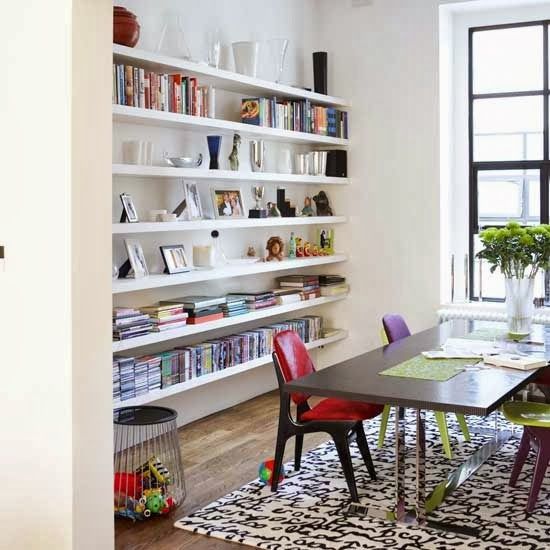 Vary shapes, sizes and colours to create an eye-catching composition, leaving some sections open and adding doors and drawers to others.
Vary shapes, sizes and colours to create an eye-catching composition, leaving some sections open and adding doors and drawers to others.
Style up with decorative tableware and serving pieces on display, with less-decorative items like linens and cutlery hidden away inside.
18. Include a multi-tasking bench
(Image credit: Future PLC/Max Attenborough)
Whilst built-in furniture can often be a brilliant way to maximise your storage potential, there are plenty of other options that don’t involve the builders or massive budgets.
Instead, before making any new furniture purchases, keep in mind how hard that piece should have to work to be worthy of a place in your home.
Mixing a bench with chairs at the dining table creates a relaxed ambiance, not to mention allowing for squeezing on an extra guest at dinner when the need arises.
19. Create an unpretentious space for everyday life
(Image credit: Future PLC/David Brittain)
If you're looking for shabby chic dining room ideas, replace a formal display cabinet with a vintage-style cupboard with chicken-wire panels instead of glass doors.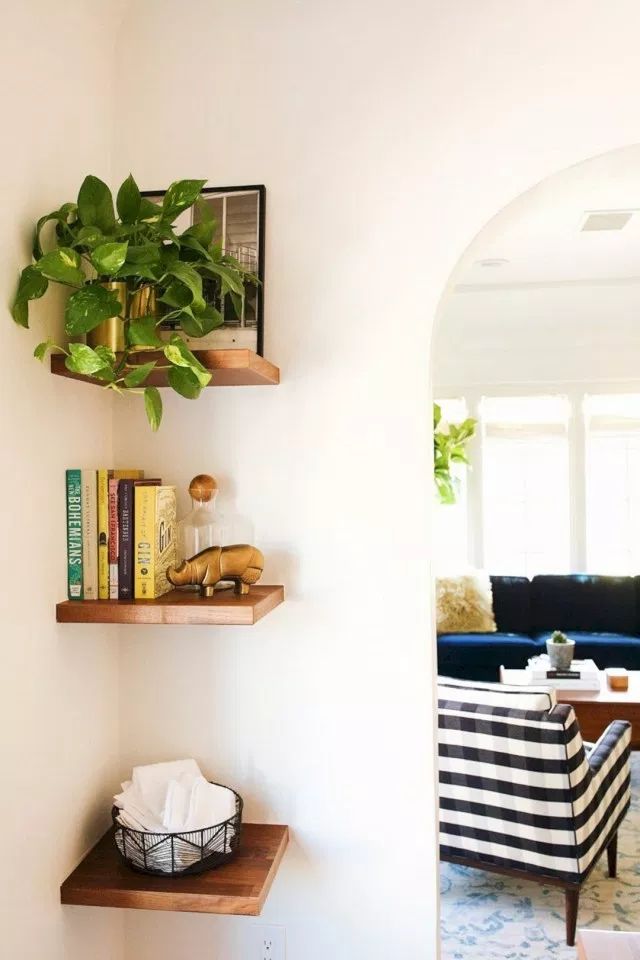 It's an easy budget dining room idea that won't break the bank. Store pretty tableware and linen in the cupboard so it doubles up as a decorative feature.
It's an easy budget dining room idea that won't break the bank. Store pretty tableware and linen in the cupboard so it doubles up as a decorative feature.
Use rustic materials such as natural flooring, chunky wood and battered leather to provide plenty of interesting textures that will create a laid-back, lived-in feel.
20. Think beyond the dining room
(Image credit: Future PLC/Damian Russell/Homes & Gardens)
If you have the space, consider incorporating a larder-style cupboard into your dining room scheme. This neutral scheme is broken up by flashes of dark, bold colours in linear markings, whether on the rug, the alternative dining room curtain idea or the large, black storage unit.
Storage on this mighty scale means there shouldn't be anything left cluttering up your dining room.
Use a tonal dining room colour scheme that is in keeping with the rest of the room to provide balance. Alternatively, opt for a glass-fronted display unit. Use the visible shelves for decorative accessories and conceal practical pieces in the drawers below or elsewhere.
21. Make it multi-functional
(Image credit: Future PLC/David Brittain)
Get super-organised with a fitted bench that doubles as a storage unit. Built-in bench seating like this corner design is an incredibly efficient use of space, especially for small kitchen ideas.
Wood is not just practical, it adds texture and warmth to a scheme, too. Include conventional drawers and pull-out baskets under the seat for versatile additional storage that is easy to access and smart and streamlined when not in use.
22. Personalise every inch
(Image credit: Future PLC/Simon Whitmore)
Dining room storage ideas don't always have to be fancy. Why not factor in a simple, standalone sideboard? Freestanding furniture can provide a more individual solution than costly bespoke built-in storage systems.
A sideboard is a great place to store plates, cutlery and glasses out of sight, especially when it is as stylish as this one. If you're on a tight budget, look out for a second-hand one you can paint for an affordable upcycled furniture idea.
23. Dress up your dining room storage
(Image credit: Future PLC/Dominic Blackmore)
Jazz up a corner of your dining room with a painted dresser – this design has lots of display space for your treasured crockery. Alternatively, make the most of ceiling height by fitting extra-tall cupboards, storing those rarely needed items in the harder-to-reach zones.
Line your display cabinets with a unique wallpaper idea for a bespoke touch.
24. Make it versatile
(Image credit: Future PLC/Polly Eltes)
For a hardworking fix, consider freestanding furniture that can work in virtually any room. Standalone designs offer heaps of variety and choice when it comes to keeping an open-plan kitchen and living space flexible.
A wooden storage chest like the one shown here can be moved in, around and out when redecorating. Finish by styling the top with your favourite accessories, including vases and candle holders.
25. Utilise unloved space
(Image credit: Future PLC/Polly Eltes)
Design a dining scheme around your storage requirements. Take advantage of all the space available with floor-to-ceiling shelving. Fit shelves into unused alcoves and use for books and decorative pieces so you won't need to provide floor-standing shelves or cupboards.
Take advantage of all the space available with floor-to-ceiling shelving. Fit shelves into unused alcoves and use for books and decorative pieces so you won't need to provide floor-standing shelves or cupboards.
Paint your shelves in a different colour to your walls to provide a neat contrast.
26. Look to your living room
(Image credit: Future PLC/Catherine Gratewick)
Add a table. The ultimate fuss-free option, a simple round table is a sure winner with those who don’t like larger, fitted pieces of furniture. Storage isn't always about concealing belongings.
Position a table in an alcove rather than adding built-in cupboards or shelving and use the tabletop for practical as well as decorative objects – such as lighting, ornaments and photo frames. Add a captivating dining room wallpaper idea to add further wow factor.
27. Consider ornamental furniture
(Image credit: Future PLC/Polly Eltes)
Bring a touch of feminine softness to a neutral dining room with a decorative armoire.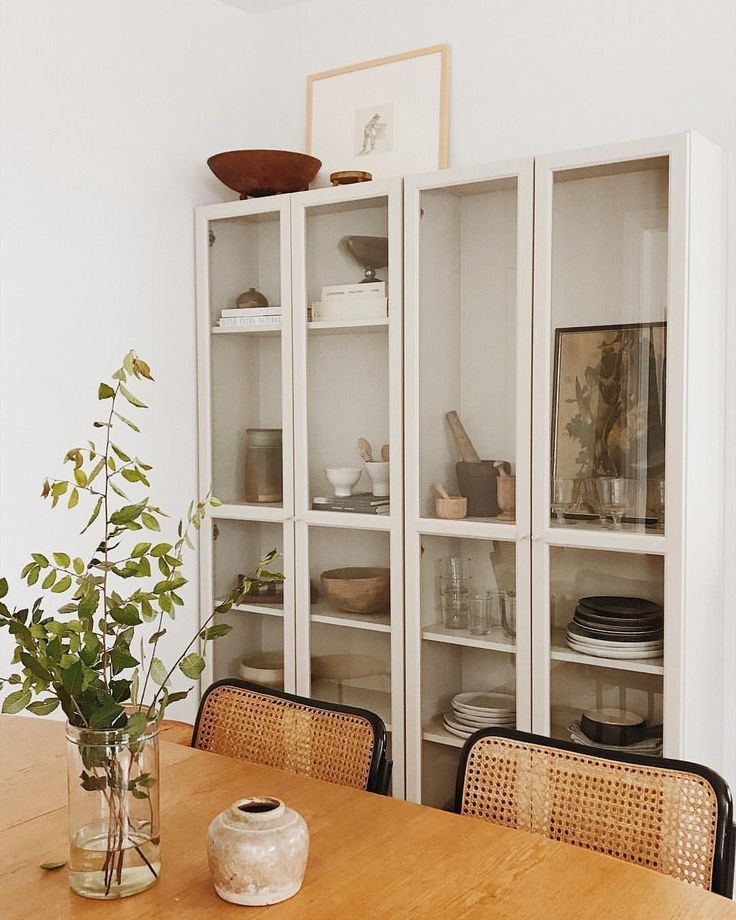 Opt for a glass-fronted display unit that will show off tableware and glassware rather than keeping it hidden from view.
Opt for a glass-fronted display unit that will show off tableware and glassware rather than keeping it hidden from view.
The curvaceous lines and ornate features of this cabinet bring an on-trend, opulent feel to the dining room. After all, the devil is in the detail.
28. Line up a display shelf
(Image credit: Future PLC/James Merrell)
If you have objects that are worthy of showing off then display them along an open shelf. Lay a carefully curated selection of ceramics and pretty trinkets along the top of a false wall, which acts as a shelf.
Alternatively, floating shelves keep a dining room neat and clutter-free and are a good way to make use of every inch, especially if you're short of floor space for freestanding units. They also add personality to a plain wall.
How do I add storage to my dining room?
Add storage to your dining room to cater for your needs, according to the space you have to utilise. If you have the space, a dresser or sideboard is invaluable to provide plentiful storage for all your dinnerware essentials. A dresser also provides an element of concealed storage, to help keep the room clutter-free and tidy.
A dresser also provides an element of concealed storage, to help keep the room clutter-free and tidy.
‘When it comes to adding storage to the dining room, it’s important to consider the size you’re working with,' says Tom St Quintin, Furniture Buyer at Furniture Village. ‘Is the room cosy and compact or are you working with a larger, open-plan space?
'Ladder shelving units are perfect for spaces that lack room for a dedicated storage area. Tall and thin, ladder units are ideal for making the most out of limited space or for tucking into empty alcoves’.
Open-fronted dressers are a great way to display your best serving ware in a dining room. While the cupboards beneath provide further storage for items less attractive but just as necessary – extra stacks of linens and glassware etc.
(Image credit: Future PLC)
How do I make storage look good in a dining room?
‘Depending on your personal preference, there’s a big trend for exposed shelving - particularly in the dining room.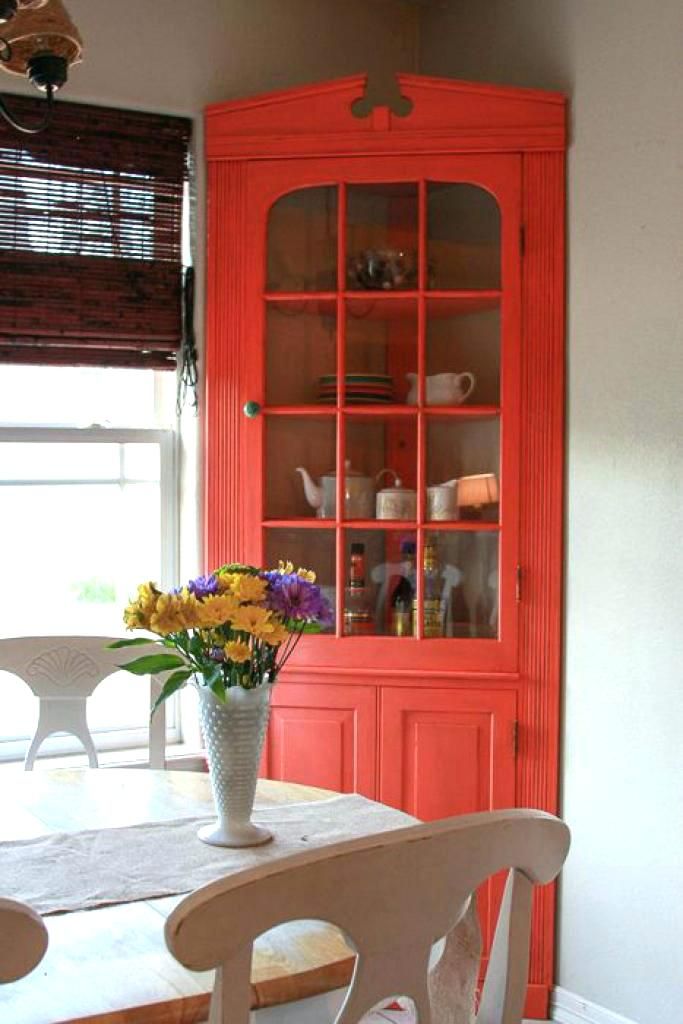 ’ Says Victoria Darnell, Cabinetry Buyer at The Cotswold Co .
’ Says Victoria Darnell, Cabinetry Buyer at The Cotswold Co .
‘Having your favourite things on show adds personality to a dining room. Tableware also looks great displayed altogether and in one place – whether it’s your very best china or an eclectic mix of decorative pieces you’ve sourced over the years, simple shelves or an open fronted cabinet is a great place to showcase it.’
What do you put in dining room drawers?
You can use the drawers of a dining sideboard or dresser as the perfect place to keep folded table linens, sets of cutlery, placemats, candle holders and table decorations for special occasions. Depending on the amount of space you have you can also use the dining room drawers to keep surplus kitchen accessories, stored out of sight but close to hand.
Lisa is a freelance journalist who has written about interiors for more than 25 years and has worked on all the major homes titles, primarily Ideal Home, but also including Homes & Gardens, Country Homes & Interiors, Style at Home, Livingetc, Woman & Home, Easy Gardens and Good Homes magazines.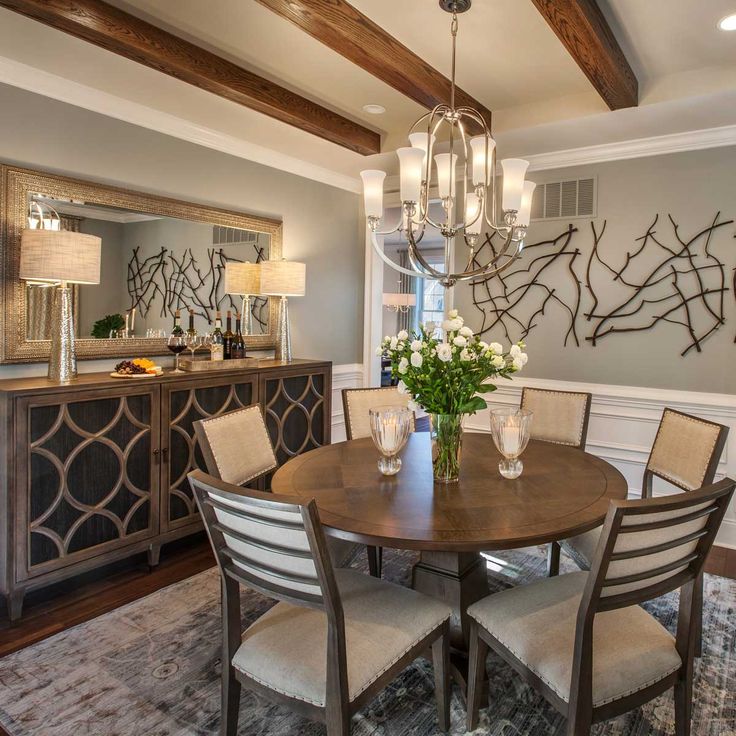 Homes and interiors have always been a passion and she never tires of nosying around gorgeous homes, whether on TV, online, in print or in person, as well as being a serial shopper/bargain hunter.
Homes and interiors have always been a passion and she never tires of nosying around gorgeous homes, whether on TV, online, in print or in person, as well as being a serial shopper/bargain hunter.
Kitchen storage organization: 20 super ideas and life hacks
Everything you need is at hand
The closer the main items that are used daily (chopping boards, spatulas, pots), the less time it takes to find, wash and clean them. Dimensional dishes (pans and pots) should be placed in the lower cabinet closer to the doors.
The most popular cutlery should be placed in a special container or hung on rails.
The photo shows an example of the distribution of the most popular items and products.
Comfortable worktop
Ideally, the worktop should be about 80-90 cm long and located between the sink and the stove. There should be a refrigerator nearby - then during cooking you will not have to walk all over the kitchen. It is desirable that the countertop for cooking was empty.
The photo shows a half-empty worktop, convenient for cooking.
Tray storage
Similar products are conveniently stored together, making them easier to find and easier to clean up after use. For this, individual boxes or trays are suitable. For example, it is better to collect jars of spices in one place, cereals in another, a set of tea in a third. Onions and garlic are recommended to be stored in perforated paper bags.
The photo shows an example of separate food storage.
Interceiling space
If the room is small and the kitchen set has not yet been selected, you should pay attention to high wall cabinets up to the ceiling.
If the furniture in the kitchen remains the same, you can use the top of the cabinets and put closed boxes or baskets on them with useful, but not used daily things.
The photo shows a kitchen with high cabinets up to the ceiling.
Place under the sink
If more than just a trash can is stored under the sink, it is worth distributing the filling over the entire volume of the cabinet. You can add an additional shelf for detergents, put a compact nightstand with drawers or screw on a rail for spray bottles.
You can add an additional shelf for detergents, put a compact nightstand with drawers or screw on a rail for spray bottles.
Vertical storage
Flat utensils - baking sheets, lids, baking pans and even pans - are easier to store upright rather than stacked on top of each other. A stack should store only deep utensils.
Rectangular containers
For storage in the kitchen cabinet, it is more ergonomic to use containers and trays with straight corners than round corners: they fit close to each other and save much more space than a set of cans. Rectangular household appliances for the kitchen also fall under this rule.
The photo shows rectangular containers that filled the entire area of the box.
Hanging baskets
Another useful storage idea in the kitchen is the use of special metal baskets that are hung on the wall or railing. They can collect the most popular products: for example, a can of coffee, a bottle of oil, a salt shaker.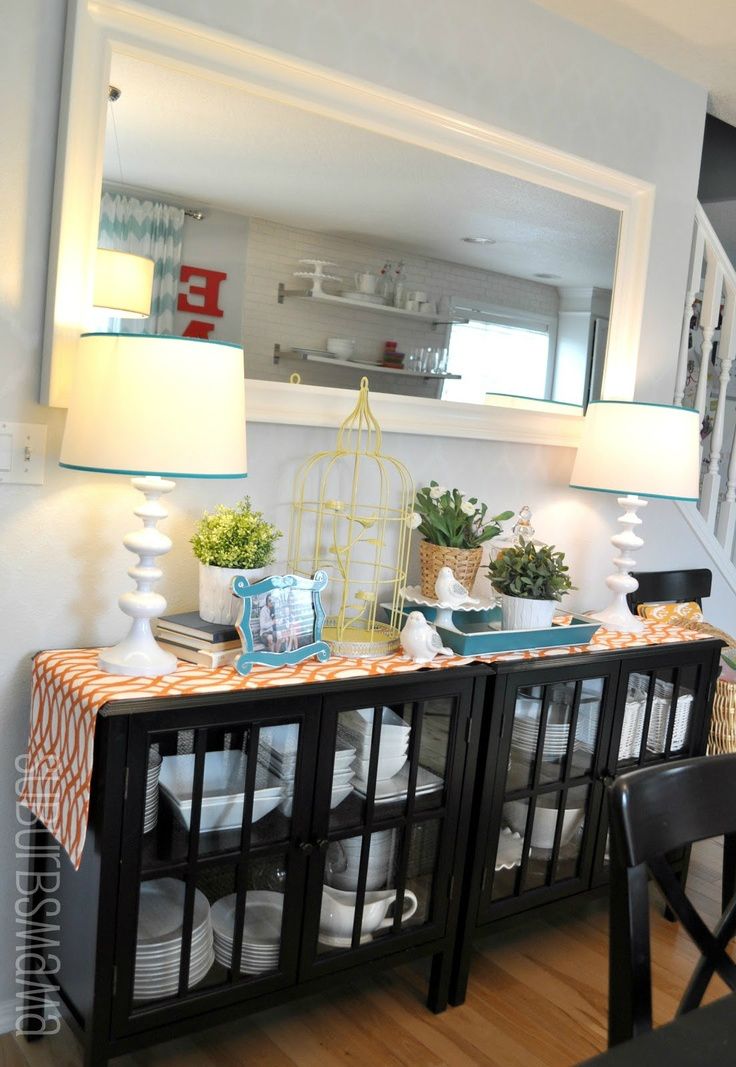 The device will unload the work surface, and the necessary items will always be at hand.
The device will unload the work surface, and the necessary items will always be at hand.
Pictured hanging structures for easy storage of jars.
Insert shelves
Small shelves allow you to get the most out of the empty space in the cupboard: food, cups or glasses will be distributed on two levels, and there is no need to screw an additional shelf. This organizer is convenient to use on the windowsill of the kitchen.
Identical containers
If plastic containers are often used in the family, it is worth buying containers of the same size: after washing and drying, they are easy to put one into another. Assorted products only clutter up the kitchen space and complicate storage.
In the photo, containers of the same shape stacked into each other.
Hooks for cups
It is useful to store mugs not only on the dish rack, but also in plain sight, especially if they are of aesthetic value. To do this, you will need special hanging fixtures or hooks that are screwed to the shelves.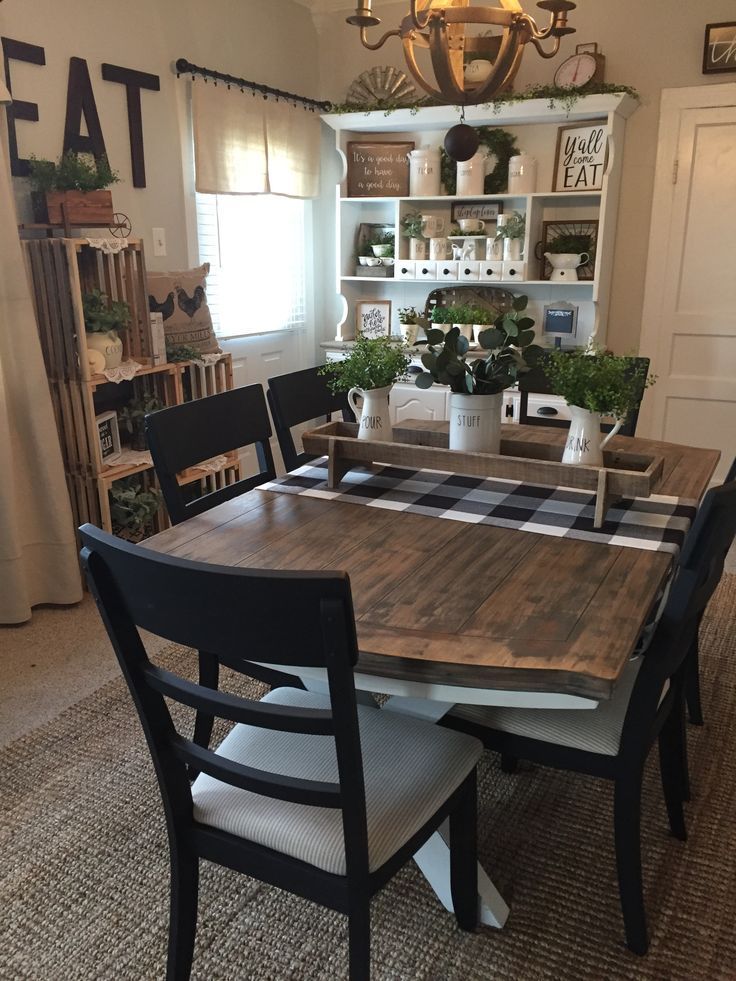
Refrigerator organizer
This unusual but handy container is perfect for the glass shelves in the refrigerator. The sliding transparent drawer effectively utilizes unused space.
Use every free corner
When ordering a kitchen set, do not neglect the narrow drawers: they are useful for storing small accessories, bottled water, knives and ladles.
The photo shows a kitchen with a convenient design for storing appliances.
Sink Organizer
Handy fixtures are good for storing sponges and cleaning products near the sink. Such accessories look neater than bottles and rags scattered around the sink.
Shelf above the refrigerator
If the refrigerator is not built into the storage system in the kitchen and the space above it is empty, it is recommended to mount an open shelf, cabinet or mezzanine on top.
The photo shows a semicircular multi-tiered shelf for storing cookbooks.
Drawer at the bottom of the cabinet
Pull-out design instead of the bottom decorative panel - another way to store in the kitchen. There are baking sheets or small toys for children to play with while adults are busy cooking. If there are pets in the house, food and water bowls are placed in the drawer and slide in when not in use.
Pictured drawer with dog bowls.
Storing wine glasses
Glass goblets can become an interior decoration if you make a special shelf and hang them by the legs. The design should not interfere during cooking and moving around the kitchen. Also on sale you can find a device that is located in the inside of the lockers.
Shelf above the table
The empty space above the dining area can be filled with one or more shelves. They can store napkin holders, plates, a sugar bowl or mugs hung on hooks.
Cabinet walls
The side walls of the cabinet can also serve as an additional place for cutlery and spices.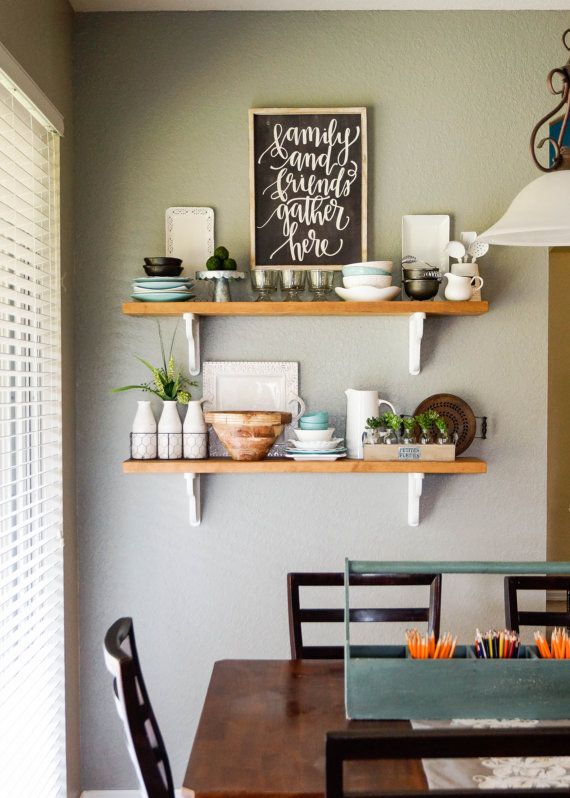 But storage in the kitchen requires thoughtfulness, so do not unnecessarily overload the space with open shelves.
But storage in the kitchen requires thoughtfulness, so do not unnecessarily overload the space with open shelves.
Pull-out system in the corner
Special designs will allow you to use the corner set: carousels, pull-out shelves, baskets.
Photo gallery
Paying special attention to such "little things" as the order in the kitchen, and properly organizing the space around you, you can significantly improve the quality of your life and transform the interior.
Kitchen storage: 10 efficient solutions
kitchen storage ideas putting things in order
Properly organized storage of kitchen utensils, seasonings, cereals, dishes will not only make the cooking place attractive in appearance and functionally convenient, but will also save time, effort, and nerves of the hostess. Arranging your kitchen pastime even in a small area is easy: listen to the following recommendations, and everything you need will always be at hand.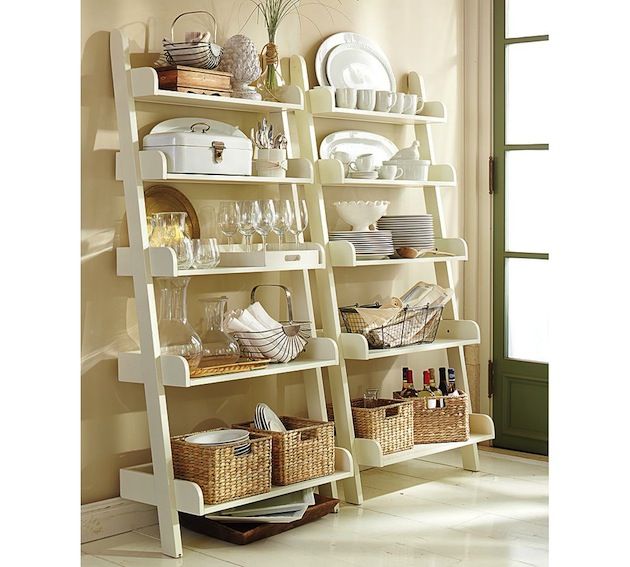
1. Prioritize storage
The main items that are used most often (for example, pots, pans, spatulas, knives, cutting boards), try to place them closer to the workplace: above and below the countertop, as well as under the hob. Place everything large in the lower cabinets and cabinets closer to the doors.
Put cutlery in use in a special organizer or hang it on a railing holder. Do not leave trifles like salt and pepper shakers, grinders with spices on the countertop: they take up useful space, while they can be quite conveniently placed on a hanging shelf. Or, if you still prefer to store some items on the countertop, collect them on a tray or in an organizer - this technique will not allow trifles to “scatter” over the entire work surface.
2. Organize storage by category
A simple rule: everything of the same type - in one place. Sort supplies and utensils by type and then you can easily and quickly find what you need, and if necessary, clean up the kitchen. Do not neglect dividers that will help you organize the space of drawers and shelves more rationally, separating one category from another.
Do not neglect dividers that will help you organize the space of drawers and shelves more rationally, separating one category from another.
It is also recommended to follow this principle when filling the refrigerator: for milk - one shelf, for jam - another, fruits and vegetables are stored in accordance with the conditions suitable for them.
3. Trays, boxes, cans
Convenient storage containers are the key to a neat and comfortable kitchen. Do not store cereals in purchased bags: they are torn, warped, crumbled and cause real chaos in the closet. Put them in jars or tin boxes. Take a separate place for jars of spices in the closet on the shelf away from bags of teas, coffee, cocoa. Choose jars and containers for bulk products not round, but rectangular: this way they will line up as compactly as possible.
And if you have already set out to make your kitchen more comfortable and tidy, then pay attention to the available plastic food containers. It is much more convenient to store identical containers, which can be stacked one inside the other without any problems, than mismatched ones that clutter cabinet shelves and complicate storage.
It is much more convenient to store identical containers, which can be stacked one inside the other without any problems, than mismatched ones that clutter cabinet shelves and complicate storage.
Cupboard shelf medium (35.5×22×13 cm, chrome)
AN-03135.5x23x13 cm
out of stock 493 q
3-tier rack shelf (chrome color)
AN-05125x25x20 cm
in stock 669 q
Pan support (chrome color)
AN-06127x23 cm
available 449 q
Holder for mugs and kitchen accessories hanging for 12 items (brown)
409322027x5x7.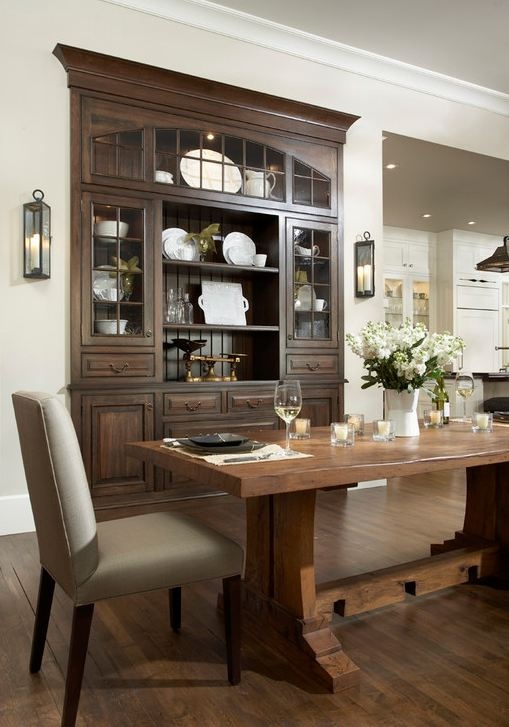 5 cm
5 cm
available 377 q
Dryer-stand "Bamboo Forest", small (32x25 cm, 2 tiers, bamboo)
414504632x25x23 cm
available 1 359 q
Paper towel holder CLUE
21230734x10.6x17 cm
available 337 q
Cupboard shelf medium (35.5×22×13 cm, chrome)
Art. AN-031
out of stock
493 q
3-tier rack shelf (chrome color)
Art. AN-051
available
669 q
Pan support (chrome color)
Art.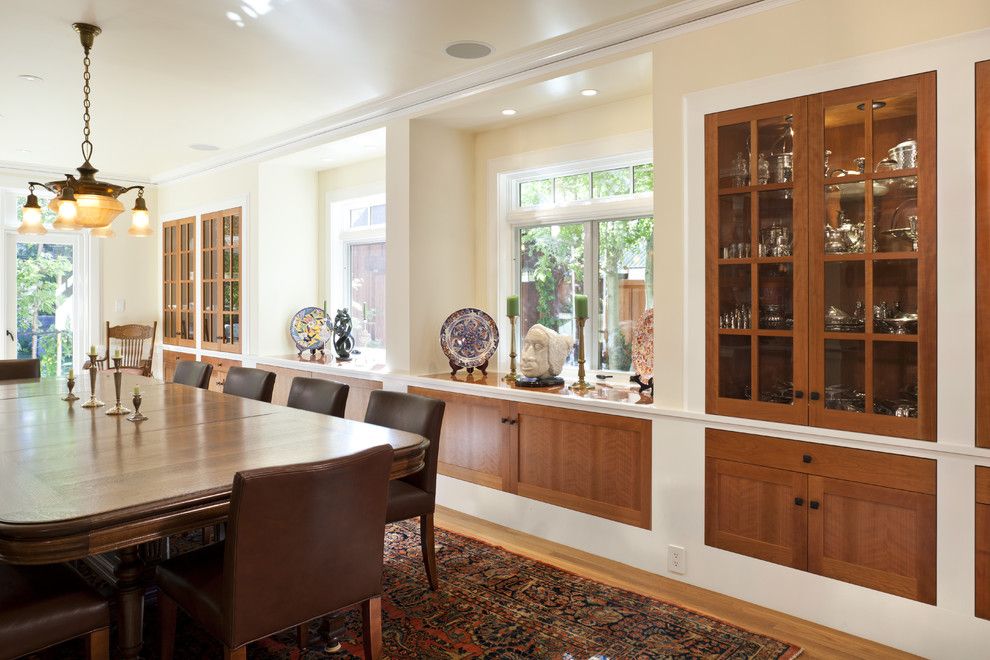 AN-061
AN-061
available
449 q
Holder for mugs and kitchen accessories hanging for 12 items (brown)
Art. 4093220
available
377 q
Dryer-stand "Bamboo Forest", small (32x25 cm, 2 tiers, bamboo)
Art. 4145046
available
1 359 q
Paper towel holder CLUE
Art. 212307
available
337 q
4. Under sink storage
Few people think of using the traditional place for a trash can for something else. Of course, you can’t put food under the sink, but a small bedside table with drawers, a hanging basket or railing for detergents, household gloves, sponges and other non-food kitchen utensils is the right place. And it is not visible, and the place does not disappear in vain, and all these bottles-jars do not loom on the sink.
5. Vertical is your salvation
Vertical is your salvation
It is preferable to store flat dishes and utensils around the dishes (pan lids, baking sheets, confectionery forms, pancakes, cutting boards, trays and even pans) in vertical rows, placing them edgewise in special stands. The advantage of this method is ease of use: to get what you need, you do not have to shift the entire stack. Stacking (putting one container into another) is only deep pots and plates and plastic food containers.
The principle of vertical storage is also applicable to kitchen textiles: it is enough to roll towels, textile napkins, unused potholders into rolls and place them in a vertical compartment. And fill the cabinets vertically correctly: everything large and heavy - in the lower cabinets, small in size and light - in the upper cabinets.
6. Rails, hanging baskets and organizers
It is very convenient to unload the working surface of the countertop using the railing systems for the kitchen and all kinds of hanging organizers. Place the most demanded things in them: coffee, tea, vegetable oil, salt and pepper shakers, the necessary jars and bags.
Place the most demanded things in them: coffee, tea, vegetable oil, salt and pepper shakers, the necessary jars and bags.
Organize hanging storage for your cups too. For this, a special organizer with hooks is ideal, easily installed on any shelf, or even just hooks on the bottom of a wall cabinet. And a special shelf for glass goblets and wine glasses can become a decoration of the kitchen interior.
7. Interior of drawers and cabinets
The useful space of kitchen cabinets and cabinets, as a rule, is “broken” by shelves. If you feel that the shelves are too wide apart and the space is being used irrationally, install additional shelves and small shelving units. Such shelves provide additional levels on which you can place both dishes and products. In addition to cabinets and cabinets, insert shelves are also recommended to be placed on the windowsill, if it has a width sufficient for this.
8. Tidy up the fridge
Sort all the food stored in the refrigerator into categories. Divide your shelf space with small plastic baskets or containers, and build dividers into the drawer. Sign the product category on each container - the division may seem obvious to you, but for other family members, such labeling will help to correctly sort out purchases.
Divide your shelf space with small plastic baskets or containers, and build dividers into the drawer. Sign the product category on each container - the division may seem obvious to you, but for other family members, such labeling will help to correctly sort out purchases.
The design of modern refrigerators, it would seem, is adapted to the maximum for kitchen and grocery needs. But if the distance between the shelves is large, buy a couple of special containers for refrigerators. A small but handy container clings to any shelf, filling the space that has not been used so far.
Above the refrigerator, even high, there is often free space - do not let it disappear. An open shelf or cabinet for rarely used products, jars, unnecessary utensils or containers fits perfectly there.
9. Drawers
Often, the lower part of the pedestals is covered with a decorative panel, and the space behind it is practically not used. So why not install a drawer there? And what to fill it with - decide for yourself: you can store onions or garlic, baking sheets, even children's toys so that the baby has something to do in the kitchen while mom cooks, or bowls of water-food for a pet. The drawer is easy to slide in when not needed. This space optimization option is ideal for small kitchens.
The drawer is easy to slide in when not needed. This space optimization option is ideal for small kitchens.
10. Filling the walls
Often there is a free wall above the dining area, which can be occupied by miniature shelves. It is not recommended to store something heavy over the dining table, but napkins, a sugar bowl, a vase of dried fruits are fine. On the same wall, you can hang cups on hooks or the already mentioned shelf for glasses with legs.
Often there is a small free space next to the cabinets, and these corners can also be filled with baskets or shelves attached to the side walls of the mezzanines for cutlery, spices, and light kitchen utensils. But there should not be too many open shelves in the kitchen: in the process of cooking, vapors with residues of fat, dust, condensate, etc., are inevitable, settling on accessible surfaces.
Finally
When designing a kitchen from scratch, focus on pull-out systems, additional hanging shelves, vertical drawers for storing ladles, tall bottles, rolling pins, etc.